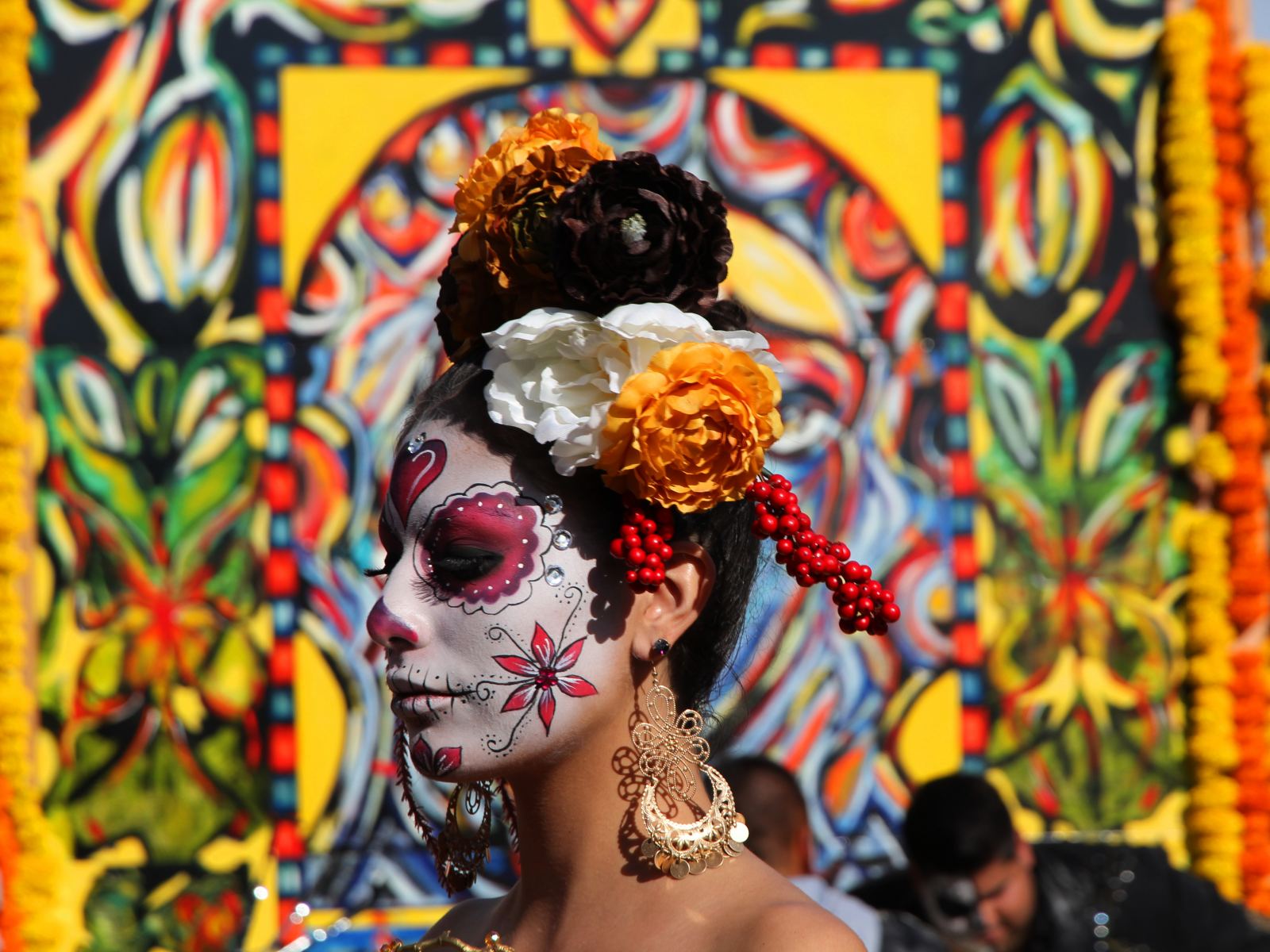Death is a strange topic because it sounds scary but it’s inevitable and universal. The thing every single one of us have in common is death (and the fact we’re alive, duh!). But we’re all going to experience death one day, unless somehow science manages to make us immortal. But is immortality even a blessing?
Death is something people fear, leading to existential crises and worrying about every move but really, death is kind of a blessing. Without death, what would we even be doing? Life wouldn’t be exciting and adventurous. We wouldn’t have bucket lists, which encourage us to live our lives to the fullest.
Because of this fear we have of death, it has become this taboo topic, we avoid speaking about. But we have to speak about it more. Especially with children. Most people seriously underestimate children and how much information and big topics they can process but it’s the prime time to bring them to familiarisation with these big topics whether that be mental health, climate change, racism and sexism and of course, death. They can handle a lot more than you think.
Discussing death with children can make it seem less scary, supporting them. It can be a scary and confusing thing and it enables children to ask questions. Kids are curious by nature and allowing them to better understand topics like this means they can explore it and question it in their own way instead of being confronted with it head on when someone dies later on in their life.
When I was younger, I went to a lot of funerals; being in a big family, there were a lot of deaths. At first, I didn’t really understand death, seeing people cry and the dismal vibe in the air was a bit overwhelming. I wasn’t close to any of the people that died but it’s still quite a bit to process for a child. The first death, close to me, was my cat, and still is my cat. That was one of the worst feelings in my life; it was confusing, shocking, overwhelming, heartbreaking, devastating and left me bewildered, lost and confused. I didn’t know how to express my feelings and I wasn’t encouraged to talk about it and felt ashamed to cry and show any extreme emotions so it all bottled up. I was never spoken to about it. It took me god knows how long to get over it. I can only wish, now, that my parents had talked to me about it and in the future, I will make sure to talk to my own kids about it (death, not my cat).
Talking about death will give you peace of mind.
As I said, the funerals I went to were very dismal, icy and melancholic. However, death is celebrated very differently by many cultures, different to the Christian and Catholic-like rituals most Western society and cultures have. Here are some of the different celebrations:
Mexico
Everyone has heard day of the dead, also known as Día de Los Muertos, which is celebrated November 1st and 2nd. Families are reminded of their dead loved ones, keeping their memories alive and visiting their graves to clean and deliver gifts like flowers. The festival is celebrated in a blast of colour and parades, singing and dancing. It’s truly beautiful and an amazing way to celebrate the dead.
November 1st and 2nd. Families are reminded of their dead loved ones, keeping their memories alive and visiting their graves to clean and deliver gifts like flowers. The festival is celebrated in a blast of colour and parades, singing and dancing. It’s truly beautiful and an amazing way to celebrate the dead.
Brazil
A few other places in Latin America celebrate Día de Los Muertos but in a calmer way, such as in Brazil, families come together and bring gifts to cemeteries. They also attend mass and eat Churrasco together, which is Brazilian barbeque.
Sweden
In Sweden, when someone dies, the body is kept somewhere special for one to three weeks before being buried or cremated. Swedish flowers are laid on the coffin and songs are sung.
Poland
The Polish open doors and windows of the house of the person who died so the soul can pass to the spiritual world from their house. Mirrors are also covered and clocks are stopped.
Ireland
Like in Poland, the Irish open windows for two hours so the soul of the deceased can pass out to leave. Blocking the open windows is believed to bring bad luck. After two hours, the windows are shut to prevent the soul from coming back.
Muslim Rituals
One of my manager’s cousins died recently, in which he had to travel for the Muslim rituals of death, which is when I first came to learn about it. The Islamic law (sharia) appeals for the rituals  and burial to happen as soon as possible, usually within 24 hours. The funeral happens at a mosque after washing the body and covering it whilst the body’s hands are placed in prayer. The body as well as the funeral attendees face mecca while being led by the holy leader (Imam) in prayer. The coffin is buried facing mecca followed by prayer (salah). The burial is usually only attended by men and three handfuls of dirt are thrown in by each person. The next several days are followed by other death rituals such as on the seventh day, people visit the grave and bring food to the poor. On the fortieth day, mourners start to wear regular clothes instead of black. In comparison to other mourning rituals and death celebrations, it lasts a lot longer.
and burial to happen as soon as possible, usually within 24 hours. The funeral happens at a mosque after washing the body and covering it whilst the body’s hands are placed in prayer. The body as well as the funeral attendees face mecca while being led by the holy leader (Imam) in prayer. The coffin is buried facing mecca followed by prayer (salah). The burial is usually only attended by men and three handfuls of dirt are thrown in by each person. The next several days are followed by other death rituals such as on the seventh day, people visit the grave and bring food to the poor. On the fortieth day, mourners start to wear regular clothes instead of black. In comparison to other mourning rituals and death celebrations, it lasts a lot longer.
China
Like Día de Los Muertos, the Chinese have Qingming. It’s Tomb Sweeping Day and the graves of their loved ones are taken care of by cleaning it, cutting weeds, etc. Gifts and offerings are also brought such as paper, symbolising money. Kites with lanterns are also flown to represent good fortune. This is their way of paying respect to the dead.
brought such as paper, symbolising money. Kites with lanterns are also flown to represent good fortune. This is their way of paying respect to the dead.
South Korea
Koreans have Chuseok, a festival in which families wake up early and prepare their tables with food (food is an important part of this celebration as they believe their ancestors harvest the crops of fruits and grains during this time). They bow twice at the table and proceed to eat. They also visit their ancestors’ tombs. People view this celebration as the South Korean Thanksgiving.
Japan
The Japanese celebrate the Obon festival, celebrated for three days (13th to 15th of the 7th month on the lunar calendar). Lanterns are placed around the city, rivers and lakes to guide their ancestors, they believe have returned during this period, back to their origins. The graves of families’ loved ones are also visited to be cleaned and to pray at.

Egypt
In ancient Egypt, when someone died, there was a lot of worshipping towards the different gods they believed in. They would parade around town with mud on their faces. Organs would be removed and kept in jars from the body, except for the heart. The priest would wash the body and put oil as well as water from the Nile river on it before mummification. The body was then mummified, proceeded by people following the priest while he prayed over the body. I couldn’t find a lot of information on current Egyptian traditions when it comes to death, it was mainly about ancient Egyptian rituals so if anyone knows a bit about current traditions, I would love to know.
Hawaii
There is a thousand year old sacred tradition called the Clean Burial where after the body is partially cremated, the bones are salvaged and buried. The bones are placed in a a Hawaiian-made cloth in a burial container. However, I think this tradition has stopped because of health concerns. Nowadays, the funerals are a combination of ancient tradition and modern traditions of the West. In the eulogy, funny stories are shared and laughter is encouraged to show affection.
Nigeria
Nigerian funerals contain a lot of singing, dancing, music. In fact, they believe the more of this, the better chance of a successful afterlife the deceased person has. There is prayer, poetry and eulogies. Sometimes there are animal sacrifices such as goats to eat. Burial preparations can last a long time but this depends on the religious beliefs of the family. As I said before, Muslims bury the body facing Mecca but sometimes Nigerians bury depending on gender: men are buried facing east to see the sunrise and women are buried facing the west to see the sunset and so she can prepare dinner for her husband in the afterlife. The body is covered in black earth (red earth is believed to cause blemishes in the afterlife). Special and significant items may be buried with the individual to help them in the afterlife.
Ghana
Ghanaians announce the death of a loved one with a letter or email. The main celebration occurs Saturday morning after the burial. There are many different tribes in Ghana who have different death rituals and religious beliefs from the Ashanti tribe to the Mole-Dagbon. In the Ashanti tribe, the family will prepare the body. The festivities include respecting the body as it goes to the ancestral world (Okra). Hundreds of people may attend the festivities; it isn’t just intimate. The Ashanti chief sits under colourful umbrellas, observing. The family members wear red or black. It is common for Ghanaians to sing gospel hymns and other religious songs. Fantasy caskets are commonly used too where casket makers will shape it to look like something the deceased loved such as a plane or bird or sea-creature, etc. A week after the loved one has died, the family will gather to remember them and their life.
different death rituals and religious beliefs from the Ashanti tribe to the Mole-Dagbon. In the Ashanti tribe, the family will prepare the body. The festivities include respecting the body as it goes to the ancestral world (Okra). Hundreds of people may attend the festivities; it isn’t just intimate. The Ashanti chief sits under colourful umbrellas, observing. The family members wear red or black. It is common for Ghanaians to sing gospel hymns and other religious songs. Fantasy caskets are commonly used too where casket makers will shape it to look like something the deceased loved such as a plane or bird or sea-creature, etc. A week after the loved one has died, the family will gather to remember them and their life.
South Africa
The window of the house that death occurred in may be covered in ash and all beds are removed. Sometimes there is an animal sacrifice to please ancestors. After the funeral and burial, attendees wash off any dirt before entering their houses to get rid of bad luck. Sometimes there is a wake known as the After Tears party entailing drinking and joking, comforting relatives and remembering the deceased.
Tibet
Another death ritual I found extremely interesting was the Tibetan Sky Burial. It is a funeral tradition where the corpse of the deceased is put on a mountaintop near a hoard of vultures where they eat at the dead and take it up into the sky. This is a way of giving back to the elements.

Every family is different, no matter what country you are from so rituals differ from family to family but these are some of the traditions that these countries hold. Some bits of information may not be accurate; I’m not an expert on the different traditions in each culture, this is what I have learnt from research. Please do correct me, if there are any mistakes.
Death isn’t necessarily a bad thing, or a curse. Of course, it is a sad, devastating thing but there’s no point stressing or dreading it as it will happen to all of us and we can’t change that. Instead, we should embrace our lives and celebrate the lives and accomplishments of our loved ones, too. Discuss and talk about it and normalise it, not just within our society but within yourself.
I would love to know your opinion on death and any cultural rituals you know of.
-Shay

You laid out your thoughts on beautifully. I has never occurred to me that death was a blessing, mostly because of the stigma around it and how we as humans just automatically perceive it as a bad thing. We’ve never even experienced death and yet we are so quick to judge it (but then again, dead men tell no tales). I loved learning about how each culture/country has their own unique form of memorials. I do go QingMing every year (or I used to) because I’m Chinese 😀 Loved this
LikeLiked by 1 person
Thank you so much for reading 🙂 Yeahh, me too! I always saw it as something scary and bad. I’m glad you enjoyed it! I enjoyed making the post and learning about it too 🙂 I would love to attend a death festival one day to experience it since I’ve never experienced something like it before! Hows QingMing? 🙂
LikeLike